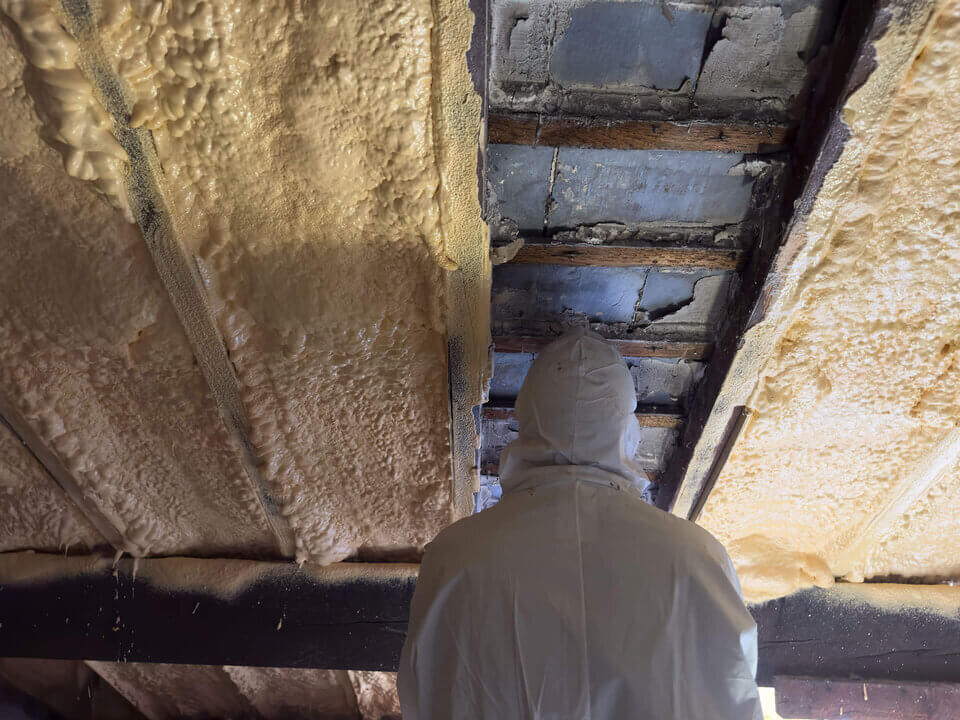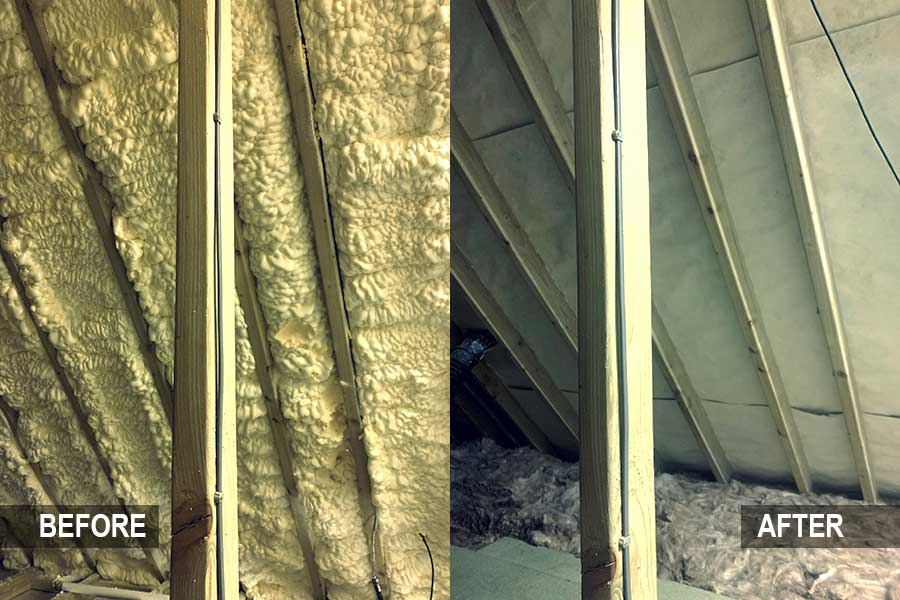Spray foam insulation removal is becoming a hot topic among homeowners — especially in Chelmsford and across Essex. What was once seen as the ultimate energy-saving solution is now causing widespread concern. If you’re wondering whether it’s time to remove spray foam insulation from your property, you’re not alone.
In this guide, we’ll walk you through why spray foam insulation is now often removed, how to know if you need to consider it, and what the removal process actually involves. We’ll also link you to helpful resources and the latest news.
**What Is Spray Foam Insulation?**
Spray foam insulation is a chemical-based material applied as a liquid, which then expands into a solid foam. It’s typically used in lofts, walls, and underfloor spaces to reduce heat loss.
**The Two Main Types: Open-Cell vs Closed-Cell**
– **Open-cell** foam is softer and more breathable but less moisture-resistant.
– **Closed-cell** foam is rigid, offers higher insulation, and is much denser.
**Why It Became So Popular**
It promised improved energy efficiency, reduced heating bills, and quick application. Sounds perfect, right? But that’s only part of the story.
**Why Spray Foam Insulation Removal Is Becoming Necessary**
**Structural Moisture Traps and Timber Rot**
Spray foam can seal roof timbers so tightly that any small leak becomes a major hidden rot problem. Over time, this can compromise the structure of your roof.
**When Spray Foam Insulation Removal Is Recommended by Lenders**
Several UK mortgage lenders are now refusing to lend on properties with spray foam insulation. Even insurers are becoming cautious. According to a recent BBC News article, buyers are increasingly finding themselves blocked from purchases due to this insulation.
**Health and Indoor Air Quality Concerns**
There are growing concerns over VOCs (volatile organic compounds) emitted during installation. In poorly ventilated areas, this can cause lingering odours and impact air quality.
**How to Tell If You Need Removal**
**Visible Mould or Condensation in Loft**
Black spots, damp smells, or visible moisture on timbers can be signs your insulation is causing more harm than good.
**Lender or Surveyor Rejection**
If you’ve recently tried to sell or remortgage and been told your foam insulation is an issue, you’re not alone. Thousands of homeowners are in the same position.
**The Removal Process Step-by-Step**
**What to Expect During Professional Spray Foam Insulation Removal**
Start with a professional inspection. At Remove Spray Foam Ltd, we offer free, no-obligation surveys to assess your property.
**Safe Manual and Mechanical Removal Techniques**
The foam is carefully scraped and extracted using specialist tools to avoid damaging underlying timber. This can take from one day to several days depending on coverage and foam type.
**Clean-Up, Waste Disposal and Roof Reassessment**
All materials are disposed of safely. A final inspection ensures your loft is left clean and safe for any future insulation.



**Understanding Spray Foam Insulation Removal Risks**
**Look for Experience and No-Deposit Policies**
We believe homeowners deserve peace of mind. That’s why we don’t ask for deposits — you only pay once the job is done.
**Ensure Proper Accreditation and Reviews**
Look for memberships like Check-a-Trade or Trusted Trader. Verified reviews are a strong indicator of trustworthiness.
**External Reports and Media Coverage**
Here are three must-read reports if you’re considering removal:
BBC: Spray Foam Causes Lending Headaches
The Guardian: The Rise and Fall of Spray Foam Insulation
Property Industry Eye: Surveyors Warn Against Spray Foam
**Internal Resources for Further Reading**
Understanding Spray Foam Removal
What Homeowners Need to Know
Local Removal Services in Essex
**Conclusion**
Spray foam insulation might have seemed like a smart move a few years ago, but many are now realising its downsides. From structural damage to blocked sales, the list of problems is growing.
Choosing professional spray foam insulation removal can save you from thousands in repairs and unlock your property’s full value.
If you’re based in Chelmsford or anywhere in Essex and suspect issues, the best next step is a professional assessment. Don’t delay — early removal can prevent thousands in future repairs.
**FAQs**
**1. Is spray foam insulation dangerous?**
Not inherently, but poor application and ventilation can cause air quality issues.
**2. How long does removal take?**
Typically 1–3 days depending on the foam’s condition and coverage.
**3. Can I remove spray foam myself?**
It’s not advised. You risk damaging roof timbers and spreading particulates.
**4. Will removal solve my mortgage issues?**
In most cases, yes — especially if accompanied by a contractor’s report.
**5. Do I need new insulation after removal?**
Yes, but make sure it’s breathable and compatible with your property’s structure.
